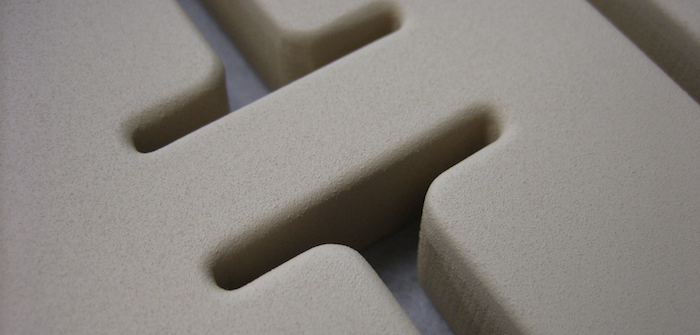Passengers booking a first class ticket for a flight pay top dollar to get the very best – from menus designed by world-class chefs, to luxury amenity kits and in-flight pyjamas. But any airline that offers a first class service always makes their heaviest investment in the cabin area to ensure passengers spending the big bucks get the most comfort and luxury money can buy.
I’ve been in the aircraft interior business for over 20 years and although much has changed, the age-old conflict between designers’ visions, engineers’ practicality and cost considerations still rages on. It never fails to amaze me how many engineers ultimately end up compromising on the design aesthetics because a part is too complex to make using a traditional autoclave.
By continuing to make this compromise, designers and engineers are missing a trick. There is an alternative process to traditional autoclave manufacturing and it’s called compression and bladder moulding. We’ve been using compression and bladder moulding at Rockwood Composites for over 20 years. Not only does it create more intricate, structurally stronger parts more quickly than an autoclave, but parts made using compression and bladder molding are also cheaper and meet the rigorous quality, safety and regulatory standards required in the aerospace industry. Both autoclave and compression and bladder molding use pre-preg material to manufacture parts, but the similarities end there.
So what are the drawbacks to autoclaves?
The biggest flaw is that they are limited when it comes to manufacturing complicated or intricate parts because the process produces parts which then need to be bonded together with a honeycomb core to form the complete part.
But where autoclaves fail, compression and bladder molding excels as it can produce a complete part – such as a long and narrow intricate molding – in one hit, with no bonded joints, making the structural properties of the part made from compression and bladder molding far stronger than that of an autoclaved part.

Tooling also throws up further differences between autoclaves and compression and bladder molding. Rockwood uses metal tooling, which is very often designed to be configurable by using interchangeable inserts. This allows similar parts to be manufactured from a single mold tool, reducing cost and time. Metal tooling needs very little hands-on labor content in its manufacture. Tool design comes straight from component design data, which in turn is fed straight to computer-controlled machining centers – the bonus being that tools are almost ready to use straight away.
Put simply, with good tooling you can make good parts. Our tooling is built specifically to customer requirements and can incorporate bladder and compression molding features in the same tool. This often translates into a lower part count, which means lower cost, with the added benefit that the interior designers get greater freedom to explore innovative designs.
So what are the main steps in manufacturing a luxury aircraft interior part using compression and bladder molding?
With compression molding, pre-preg material is placed on a tool, which is then forced closed within a heated press. The parts can be solid or have a lightweight foam core. Components with undercut and side features can all be molded using tooling with collapsing cores and side-action tooling. The results are parts that have a molded face on all surfaces.
Bladder molding, on the other hand, is a technique where an inflated pressure bag provides the consolidation pressure in the molding process. Unlike compression molding, the surface on which the bladder makes contact is not controlled by tooling.
Finally comes the all-important surface finish using electrolysis or electroplating. When it comes to the plating process, composite parts are no different to any other material and can be coated in gold, chrome, nickel or aqua graphics.
Don’t get me wrong, as an engineer, I’m always blown away by the engineering behind the part. But I’m also a realist. I know the majority of passengers paying a premium to fly first class will not be thinking about the compression and bladder molding that created the composite lamp, tray or door. Their interest lies in the luxury surroundings of the cabin and the fact that their lamp, tray or door looks high-end and contributes to the overall experience of flying first class. And that’s as it should be; that means we’ve done a good job.
Based in Devon, UK, Rockwood Composites has designed and manufactured tens of thousands of high-end cosmetic and engineering composite parts for the interiors of some of the world’s largest airlines. From 24-carat gold-plated louvred windows, lamps and trays to side supports for seats and small caps for armrests on chairs.





